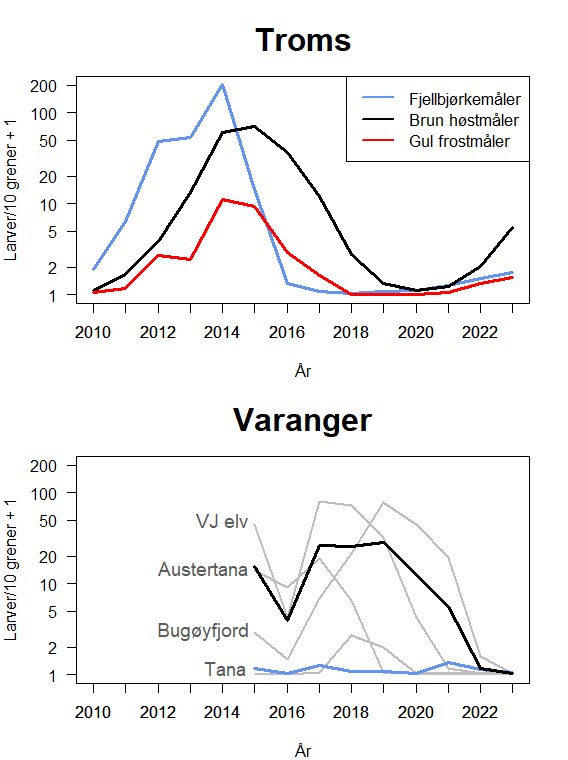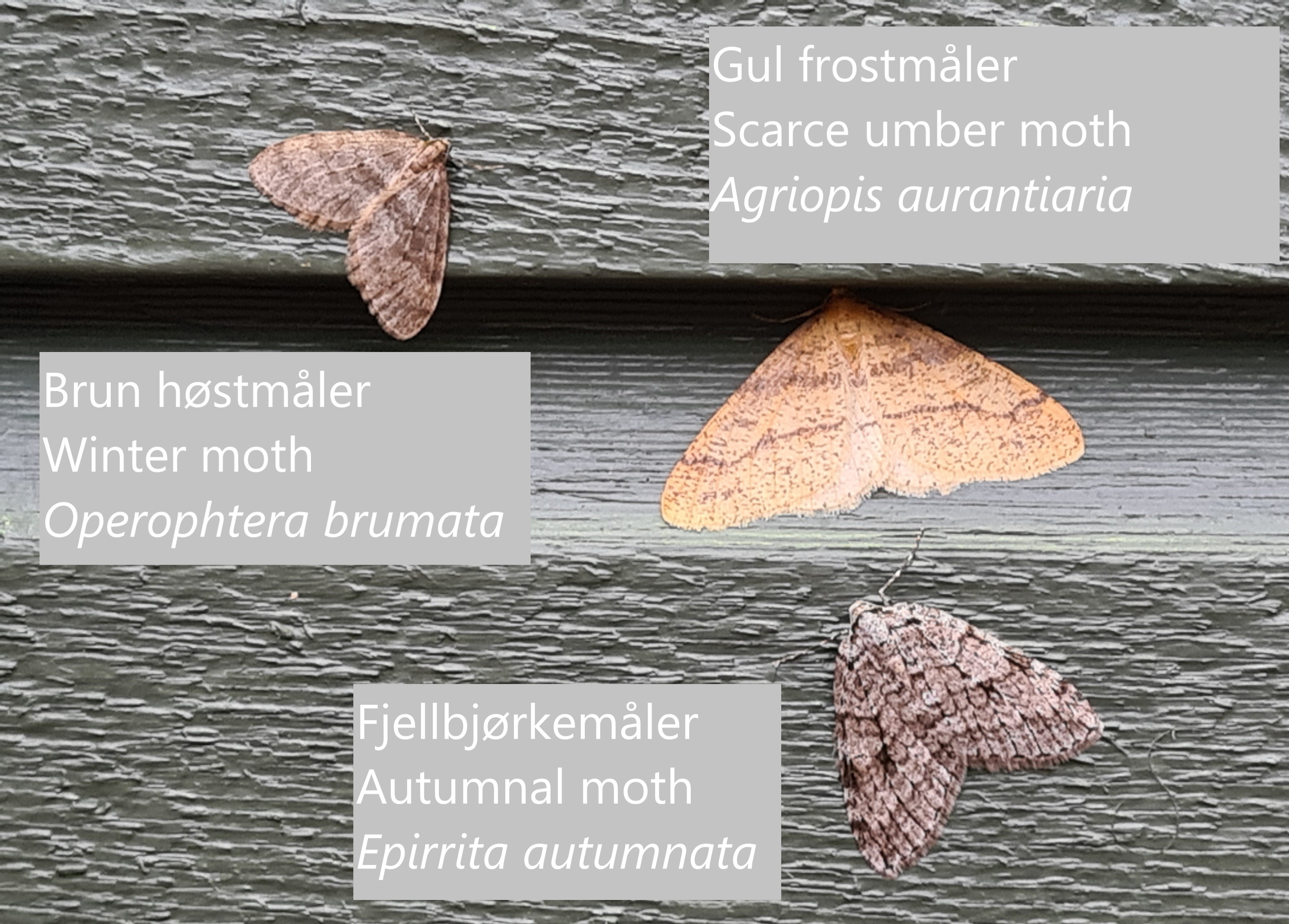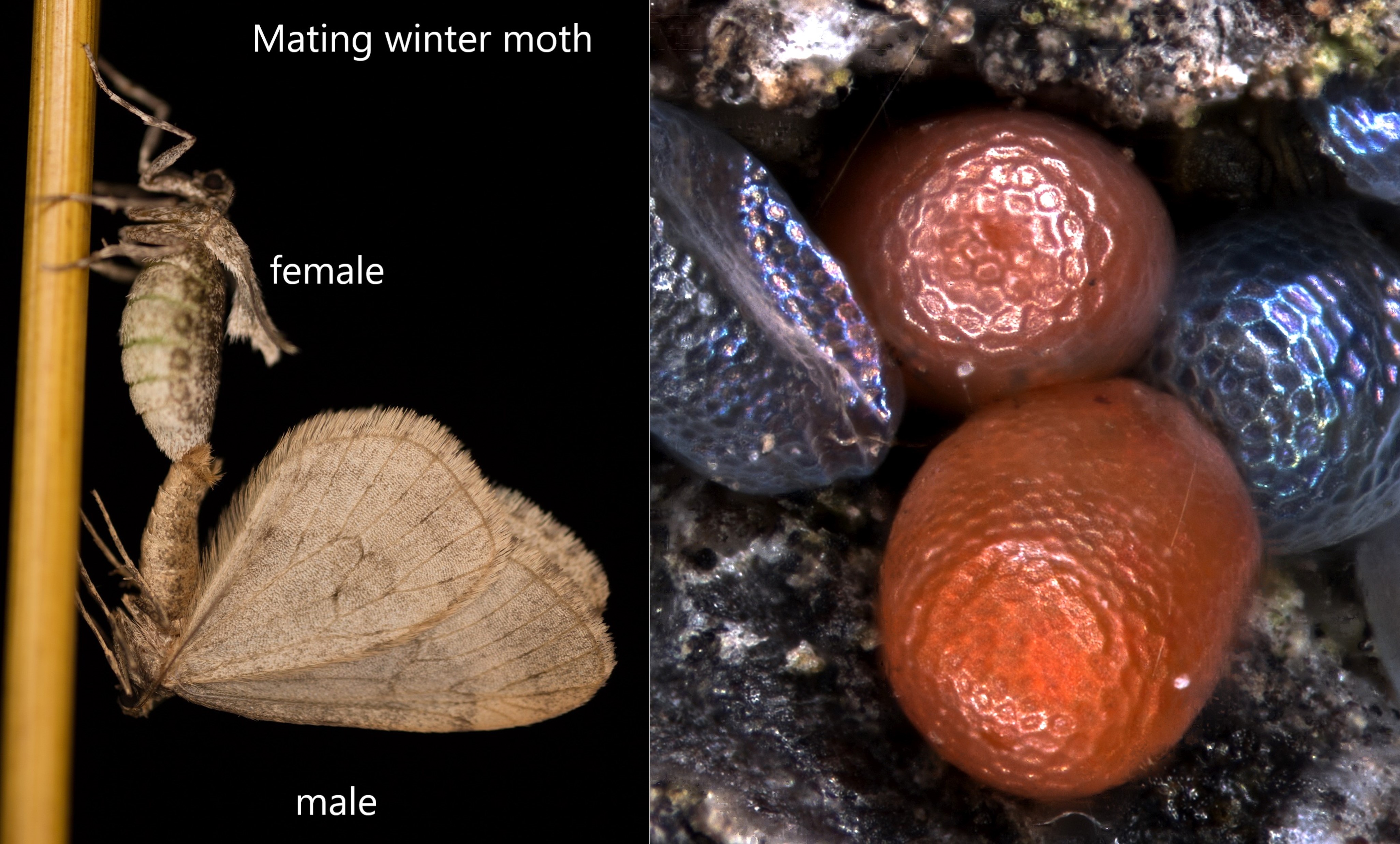Geometrid moths are insects with a holometabolic life cycle. This means that the larvae, which feed on the leaves of birch trees in summer, undergo a complete metamorphosis into adult moth during the autumn. The adult moths have just begun their flight period, and COAT researchers are on their track!
A Scarce umber moth male sitting on the window, photographed from the inside. A fairly typical sight for people who forget to turn off the light in the window sill in autumn. Photo: Jon Aars.
Since 1999, we have monitored the population dynamics of geometrid moth at more than 240 stations on the coast of Troms. In 2015, 40 new stations, distributed at four localities in the forest-tundra ecotone in East Finnmark, were established. These long monitoring series are a necessity to understand the drivers of the spectacular population cycles in geometrid moth, which display population peaks - termed outbreaks - approx. every 10 years. Such outbreaks can cause large scale forest damage. The monitoring series also inform the public and forest management about the current phase in the cycle. In 2023, the moth populations in East Finnmark are at an absolute low, while the populations in Troms are on the increase towards a new population peak. COAT's researchers are currently developing population models which will permit more accurate near-term forecasts of the development of moth populations.

Average density of moth larvae in summer (larvae/10 branches) at COAT monitoring localities in Varanger (4 localities, 40 stations) and Troms (12 localities, 244 stations). The grey lines for Varanger show the average for winter moth per locality within this region. Note that for Varanger monitoring only began in 2015. The scarce umber moth is so far absent in the registrations from this region.
In Troms and Finnmark three species of geometrid moth show pronounced population cycles. These are autumnal moth, winter moth, and scarce umber moth. The latter is so far rare in Finnmark, but is becoming established as an important outbreak species in Troms.

All three moth species present in the region in the adult stage. Photo: Jane Uhd Jepsen.
The adult moths begin their flight period in September and can be observed until the onset of winter. They have one task only, to find a mate. After mating the females lay their eggs in crevices in the bark on birch trees. The adults die after mating, while the eggs overwinter and develop into larvae which emerge around bud burst the coming spring.

Left: Mating of Winter moth. Photo: Jon Aars. Right: Moth eggs. Photo: Malin Ek.
The adult moths are attracted to light, so switch on a bright outdoor lamp and leave it overnight! At this time of year, you might see all three species.